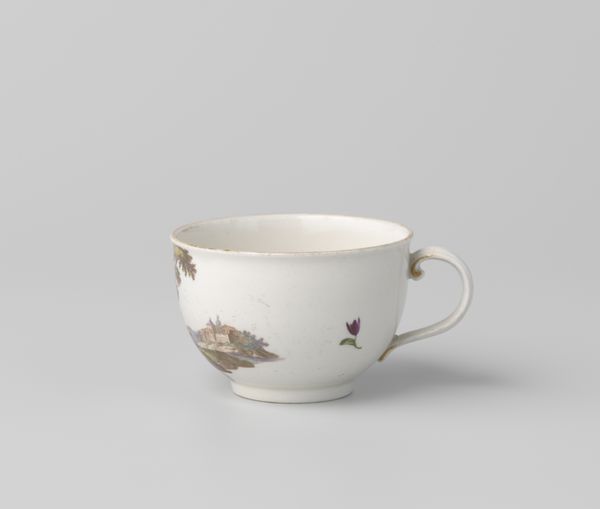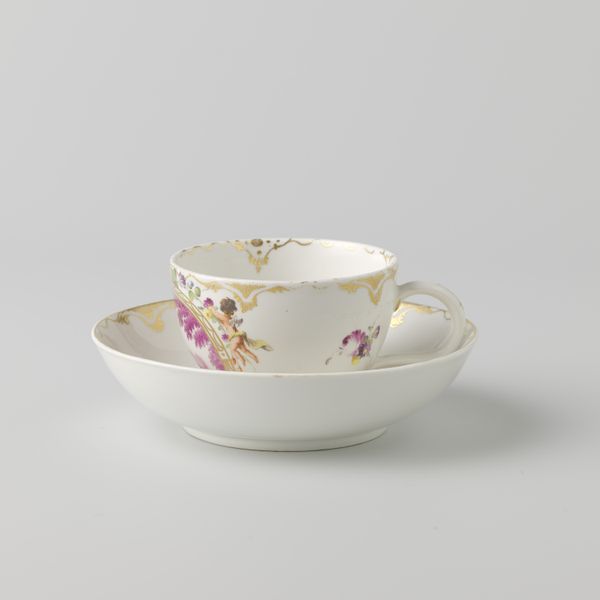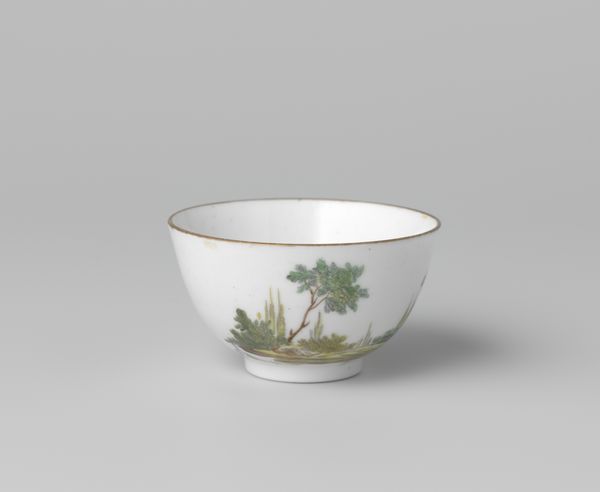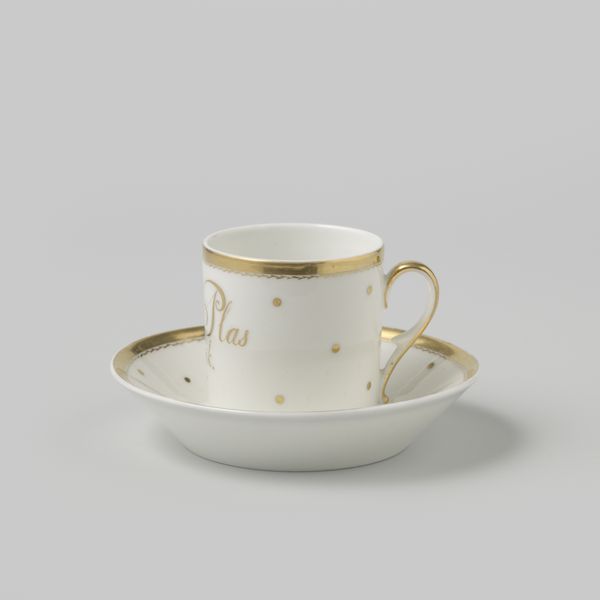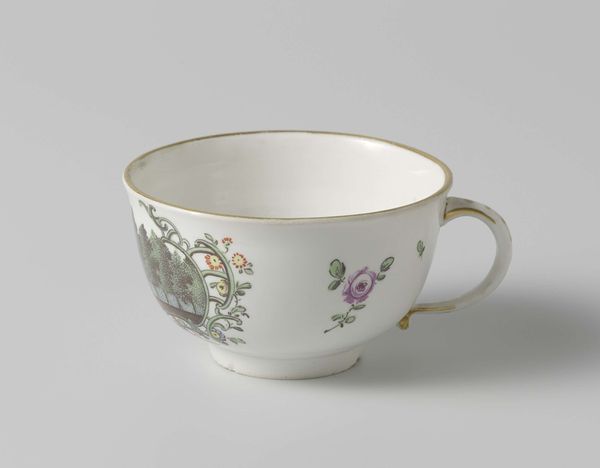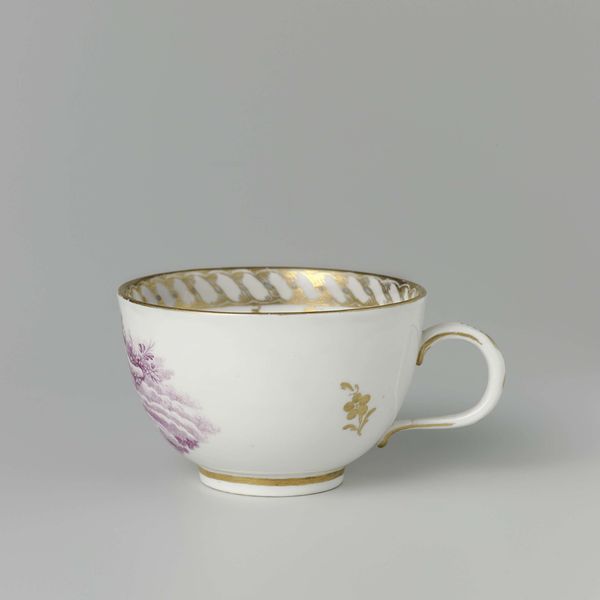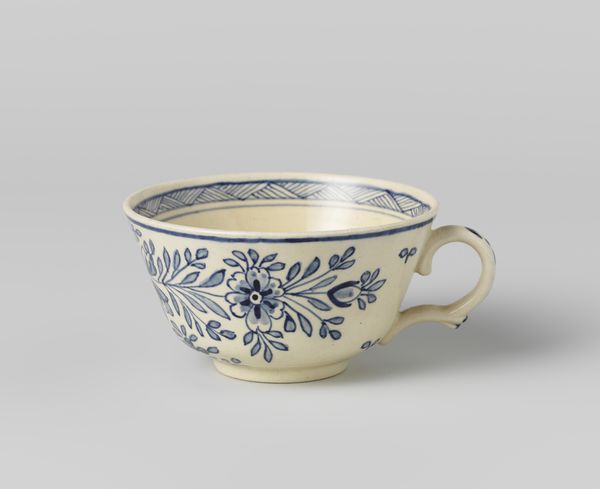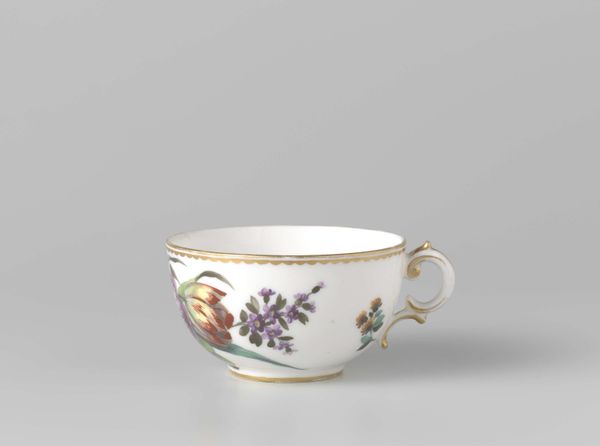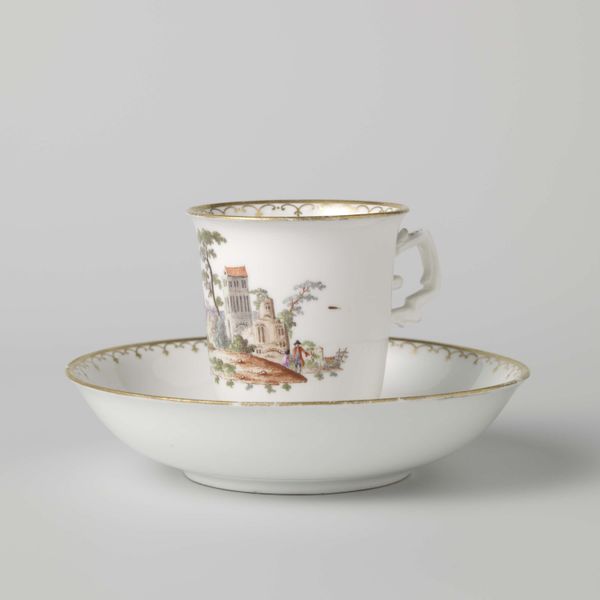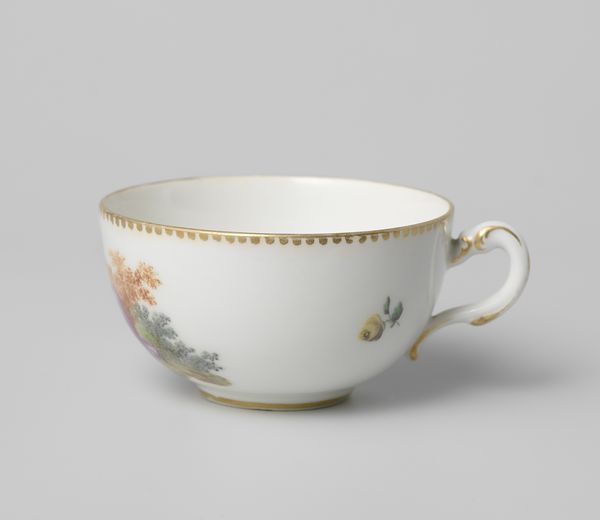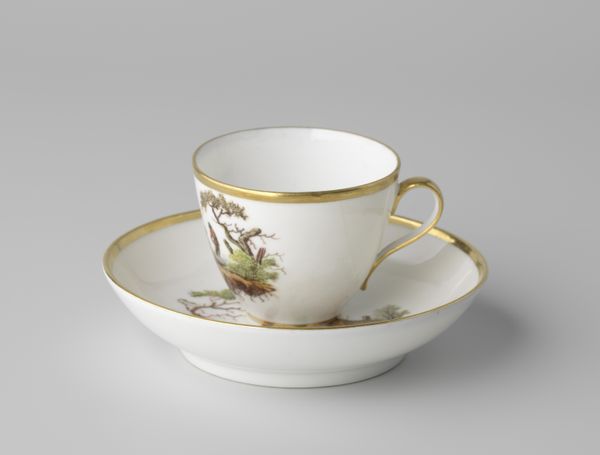
Dimensions: height 4.6 cm, diameter 8 cm, diameter 3.5 cm, width 9.7 cm
Copyright: Rijks Museum: Open Domain
Editor: So, we're looking at a cup— "Cup with birds in a landscape," it's called. It's earthenware with painting, dating from around 1760-1800. It’s currently held at the Rijksmuseum. The Rococo style and delicate painting of birds gives it such a gentle feeling. How do you see this piece? Curator: For me, this cup isn’t just decorative; it's a material record of 18th-century production. Look closely at the earthenware: it tells us about the extraction of clay, the labor involved in shaping it, the firing process, and then, crucially, the painting. Editor: You’re right! I didn’t really consider the labor, but the detail does seem intricate, especially the small landscape details. Curator: Exactly! It embodies a confluence of skill. But, let's not ignore the social context. Who owned such a cup? What role did it play in daily life, in displays of wealth and taste? Editor: Oh! It’s easy to miss that – was this just for the upper classes? Would the materials themselves been a status symbol? Curator: Precisely. Think of it within the context of global trade networks, the colonial exploitation necessary to acquire some of the raw materials or inspire the imagery. Editor: Wow. Seeing it as a product of all those things gives me such a different perspective on something that, on the surface, looks like a simple decorative object. I guess there's nothing "simple" about it after all. Curator: Exactly, and that is the beautiful thing about viewing even what might seem to be everyday things in our collections. Everything has a background that we can learn from if we only scratch the surface and consider all the things, human and natural, that had to work in concert for a beautiful teacup to find its way into existence.
Comments
No comments
Be the first to comment and join the conversation on the ultimate creative platform.
